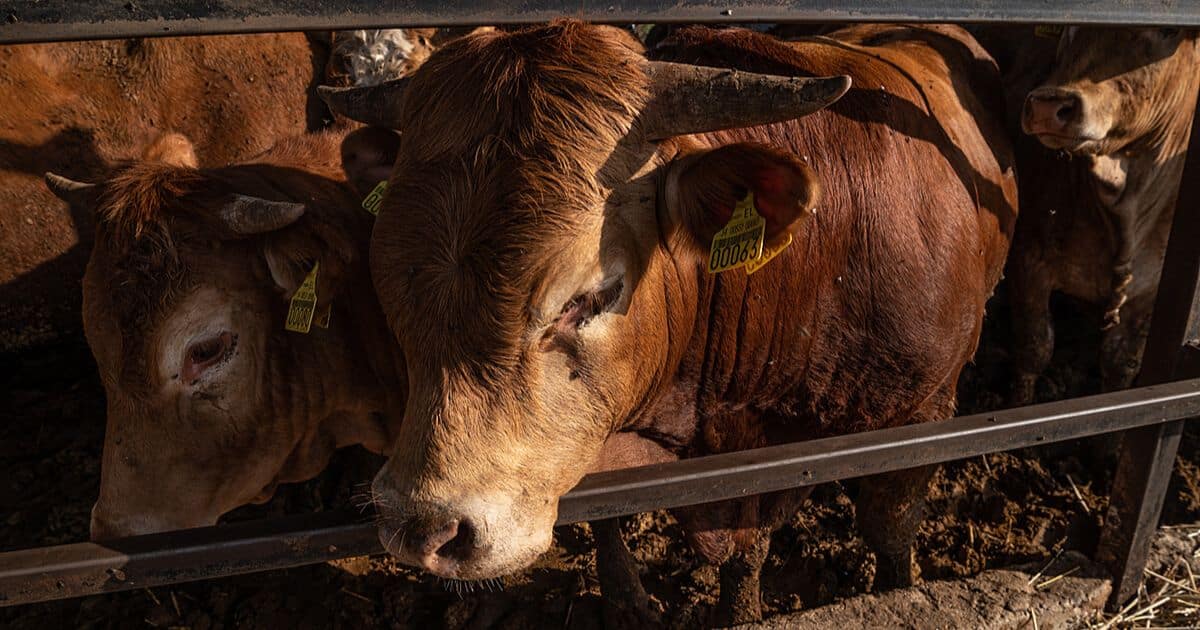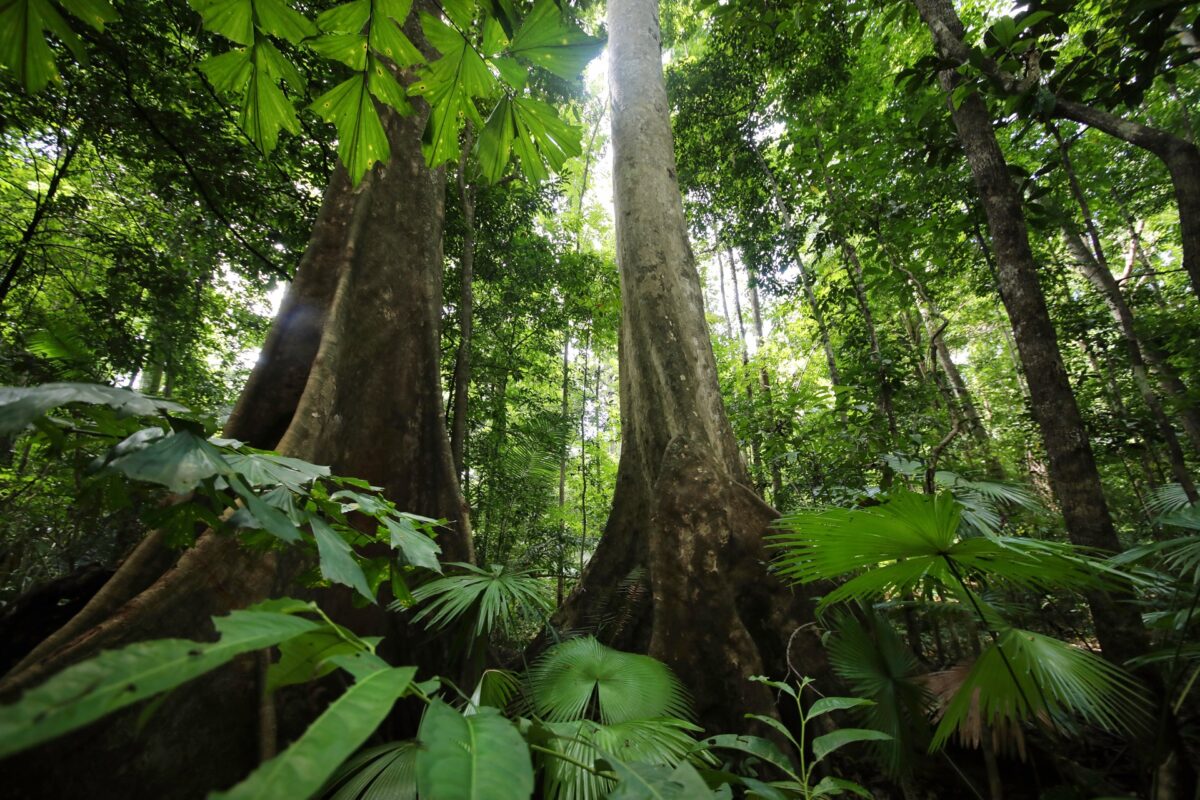Ranching and farming have eroded almost all the soil in the Alps – New Scientist

Report on Anthropogenic Soil Erosion in the Alps and its Implications for Sustainable Development Goals
1.0 Executive Summary
A recent study reveals that human activities, primarily agriculture and livestock grazing, have caused severe and accelerated soil erosion in the Alps over the past four millennia. The rate of soil loss is estimated to be four to ten times faster than the natural rate of soil formation, effectively stripping the landscape of soil that developed since the last glacial period. This extensive land degradation poses a significant threat to the achievement of several United Nations Sustainable Development Goals (SDGs), particularly those concerning life on land, food security, and climate action.
2.0 Research Findings on Alpine Soil Degradation
Research conducted by William Rapuc and colleagues at the French National Centre for Scientific Research analyzed lithium isotopes in sediments from Lake Bourget, France, to reconstruct a 10,000-year history of soil erosion in the surrounding Alpine region.
- Methodology: The study utilized lithium isotope analysis, which can differentiate between periods of soil formation (weathering) and soil erosion.
- Key Finding: While climate change influenced soil loss in the early Holocene, a significant shift occurred approximately 3,800 years ago. Since this point, human activity has become the dominant driver of soil erosion, marking the beginning of a regional “soil Anthropocene”.
- Impact: The loss of this carbon-rich soil diminishes the region’s capacity to support ecosystems and agriculture, and accelerates erosion from wind and water. This directly impacts the viability of sustainable land use.
3.0 Historical Phases of Human-Induced Erosion
The study identifies three distinct surges in soil loss linked to evolving human land-use patterns, each moving the region further from land degradation neutrality as outlined in the SDGs:
- Bronze Age (3,800 to 3,000 years ago): The initial surge is attributed to the expansion of livestock grazing at high altitudes.
- Iron Age to Roman Era (2,800 to 1,600 years ago): The second surge was driven by the development of farming at lower altitudes.
- Post-Roman Era to Present (1,600 years ago onwards): The final and ongoing surge corresponds with the intensification of agriculture, including the use of ploughs and other tools.
4.0 Implications for Sustainable Development Goals (SDGs)
The findings present a critical challenge to the 2030 Agenda for Sustainable Development. The degradation of Alpine soil directly undermines progress on the following goals:
- SDG 15: Life on Land: The research provides a stark example of failure to meet Target 15.3, which calls for combating desertification and restoring degraded land and soil. The accelerated erosion represents a profound degradation of a vital terrestrial ecosystem.
- SDG 2: Zero Hunger: By reducing the soil’s capacity to support crops and vegetation, erosion directly threatens food security and sustainable agriculture (Target 2.4). The very agricultural practices intended to produce food have, over time, degraded the natural resource base required for it.
- SDG 13: Climate Action: Alpine soils are a crucial carbon store. Their erosion releases stored carbon into the atmosphere and reduces the ecosystem’s future sequestration capacity, thereby working against climate mitigation efforts.
- SDG 12: Responsible Consumption and Production: The historical analysis demonstrates a long-term pattern of unsustainable production (agriculture and grazing). This highlights the urgent need to transition towards practices that ensure the sustainable management of natural resources like soil (Target 12.2).
5.0 Conclusion: A Global Perspective on the Soil Anthropocene
The historical degradation in the Alps serves as a warning. The report notes that in regions where intensive agriculture began more recently, such as the United States, the “soil Anthropocene” is proceeding at an even more alarming rate—up to 1,000 times faster than pre-industrial levels. According to the Natural Resources Defense Council, modern agricultural activities are fundamentally altering the natural processes of soil formation and development on a global scale. This underscores the universal urgency of implementing sustainable land management practices to protect soil resources, ensure long-term food security, and meet global sustainability targets like SDG 15 and SDG 2.
Analysis of Sustainable Development Goals in the Article
1. Which SDGs are addressed or connected to the issues highlighted in the article?
The article on soil erosion in the Alps due to human activity connects to several Sustainable Development Goals (SDGs). The primary issues of land degradation, unsustainable agricultural practices, and their impact on ecosystems and food production are central to the 2030 Agenda.
-
SDG 15: Life on Land
This is the most directly relevant SDG. The article’s core theme is the degradation of a terrestrial ecosystem (the Alps) through soil erosion (“stripped the Alps of almost all the soil”). It explicitly discusses the loss of the “carbon-rich foundation of this mountain ecosystem” and how this degradation impacts the region’s ability to support life (“less capacity to support vegetation and crops”). This aligns with SDG 15’s aim to protect, restore, and promote the sustainable use of terrestrial ecosystems and halt land degradation.
-
SDG 2: Zero Hunger
The article links soil loss directly to agricultural capacity. It mentions that human activities like “grazing livestock and farming” and “more intensive agriculture using ploughs” are the causes of erosion. The consequence is that the region has “less capacity to support vegetation and crops.” This directly impacts food security and the sustainability of food production systems, which are key components of SDG 2.
-
SDG 12: Responsible Consumption and Production
This goal is relevant because the soil erosion described is a direct result of unsustainable production patterns, specifically in agriculture. The article notes that “agricultural activities” are fundamentally shifting how soils are formed. The historical and ongoing practices of farming and grazing that lead to soil loss “four to 10 times faster than they grew” represent an unsustainable use of natural resources (soil), which is a central concern of SDG 12.
2. What specific targets under those SDGs can be identified based on the article’s content?
Based on the issues discussed, several specific targets can be identified:
-
Target 15.3: Combat desertification, restore degraded land and soil
The article is fundamentally about land degradation. It states, “We destroyed the soils at a rate four to 10 times faster than they grew,” which is a clear description of failing to halt land degradation. The entire study, which reconstructs patterns of soil erosion, is focused on understanding the process of land and soil degradation, making this target highly relevant.
-
Target 15.4: Ensure the conservation of mountain ecosystems
The research is set in the Alps, a critical mountain ecosystem. The article highlights the loss of soil that formed the “foundation of this mountain ecosystem.” The degradation of this soil base directly threatens the health and biodiversity of the Alps, linking the content directly to the conservation of mountain ecosystems as stipulated in this target.
-
Target 2.4: Ensure sustainable food production systems and implement resilient agricultural practices
The article identifies “grazing livestock,” “farming,” and “intensive agriculture using ploughs” as the drivers of soil loss. These are examples of unsustainable agricultural practices. The consequence, a reduced “capacity to support vegetation and crops,” shows that these systems are not resilient and do not “progressively improve land and soil quality,” as the target requires. The article describes the opposite effect.
-
Target 12.2: Achieve the sustainable management and efficient use of natural resources
Soil is a critical natural resource that, as the article notes, “developed over millennia.” The finding that human activity has caused this resource to be lost at a rate up to “1000 times faster than before” in some regions highlights a failure in its sustainable management and efficient use. The article’s focus on the “soil Anthropocene” underscores how human production methods are unsustainably depleting this resource.
3. Are there any indicators mentioned or implied in the article that can be used to measure progress towards the identified targets?
Yes, the article mentions or implies several quantitative and qualitative indicators that can be used to measure progress.
-
Indicator for Target 15.3 (Proportion of land that is degraded over total land area)
The article provides a direct, measurable indicator of land degradation: the rate of soil loss. The study found that soil was lost “at a rate four to 10 times faster than they grew” in the Alps. It also cites that in the US, “soil loss is occurring at a rate as much as 1000 times faster than before the last glacial period.” This rate of loss is a powerful indicator of the extent and speed of land degradation.
-
Indicator for Target 15.4 (Mountain Green Cover Index)
While not explicitly mentioning the “Mountain Green Cover Index,” the article implies a negative trend for this indicator. It states that the loss of soil “means the region has less capacity to support vegetation.” A decrease in the capacity to support vegetation would lead to a lower green cover, which this indicator is designed to measure.
-
Indicator for Target 2.4 (Proportion of agricultural area under productive and sustainable agriculture)
The article provides a negative indicator for this target. The description of agricultural practices (“grazing livestock,” “farming,” “intensive agriculture”) that result in massive soil loss implies that the proportion of agricultural land under sustainable management is low in the studied region. The degradation of soil quality is a direct measure of unsustainable agriculture.
-
Indicator for Target 12.2 (Material Footprint, Domestic Material Consumption)
The rate of soil erosion serves as a proxy indicator for the unsustainable use of a natural resource. The article’s central finding—that human activity has accelerated soil loss far beyond its natural rate of formation—is a clear measure of the unsustainable consumption of the soil resource, which aligns with the intent of indicators measuring resource use efficiency.
4. Summary Table of SDGs, Targets, and Indicators
| SDGs | Targets | Indicators Identified in the Article |
|---|---|---|
| SDG 15: Life on Land | 15.3: By 2030, combat desertification, restore degraded land and soil… and strive to achieve a land degradation-neutral world. | Rate of soil loss: The article quantifies this as “four to 10 times faster than they grew” in the Alps and up to “1000 times faster” in the US, serving as a direct measure for Indicator 15.3.1 (Proportion of land that is degraded). |
| 15.4: By 2030, ensure the conservation of mountain ecosystems, including their biodiversity… | Reduced capacity to support vegetation: The article states soil loss means the Alps have “less capacity to support vegetation,” implying a negative trend for mountain ecosystem health and green cover. | |
| SDG 2: Zero Hunger | 2.4: By 2030, ensure sustainable food production systems and implement resilient agricultural practices… that progressively improve land and soil quality. | Degradation of soil from agriculture: The article identifies “grazing livestock,” “farming,” and “intensive agriculture” as causes of soil loss, indicating unsustainable practices that degrade soil quality instead of improving it. |
| SDG 12: Responsible Consumption and Production | 12.2: By 2030, achieve the sustainable management and efficient use of natural resources. | Unsustainable depletion of soil: The rapid erosion caused by human activity (“soil Anthropocene”) demonstrates the unsustainable management and use of soil, a critical natural resource. The rate of loss is an indicator of this inefficiency. |
Source: newscientist.com

What is Your Reaction?
 Like
0
Like
0
 Dislike
0
Dislike
0
 Love
0
Love
0
 Funny
0
Funny
0
 Angry
0
Angry
0
 Sad
0
Sad
0
 Wow
0
Wow
0









































































